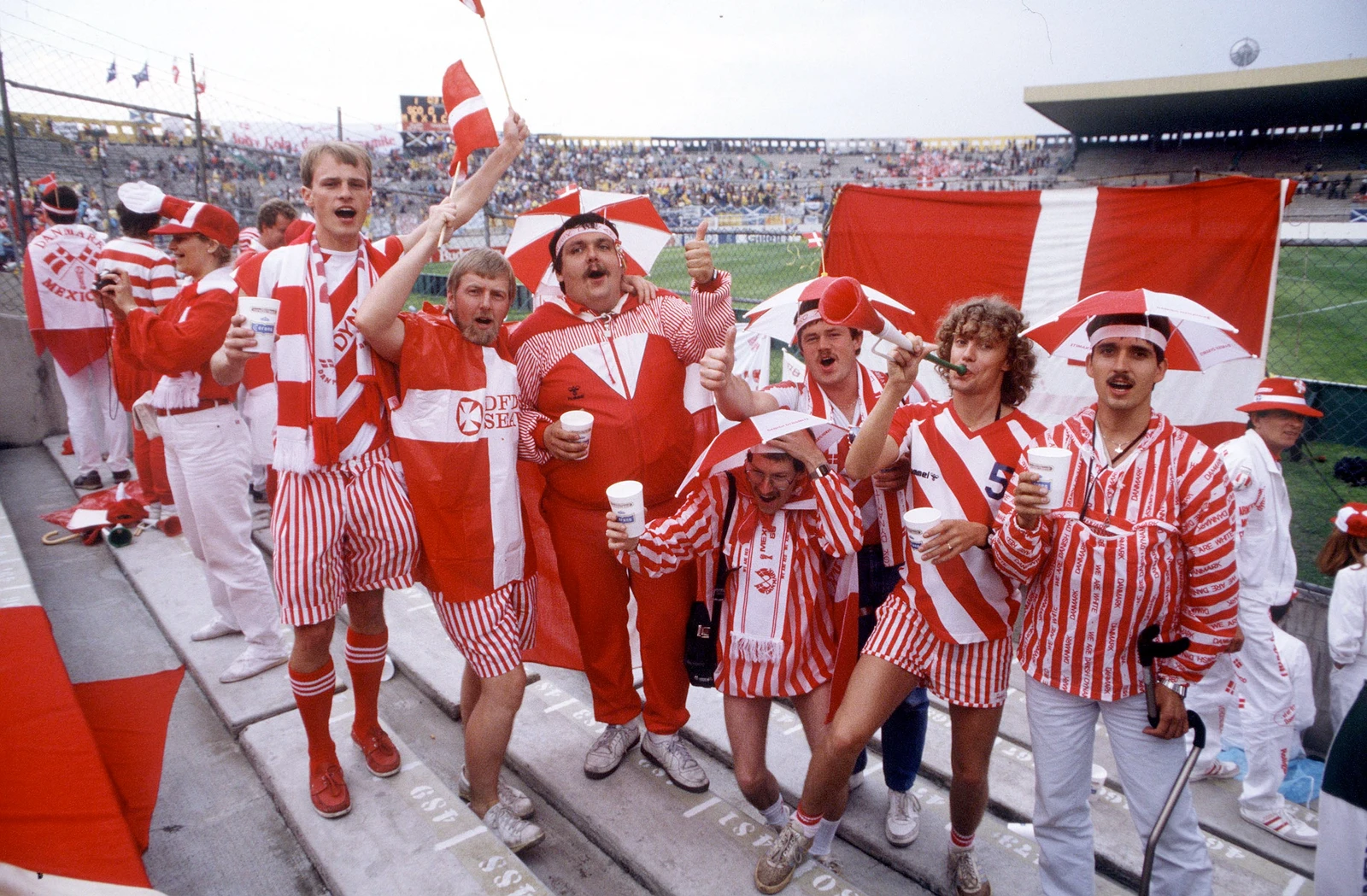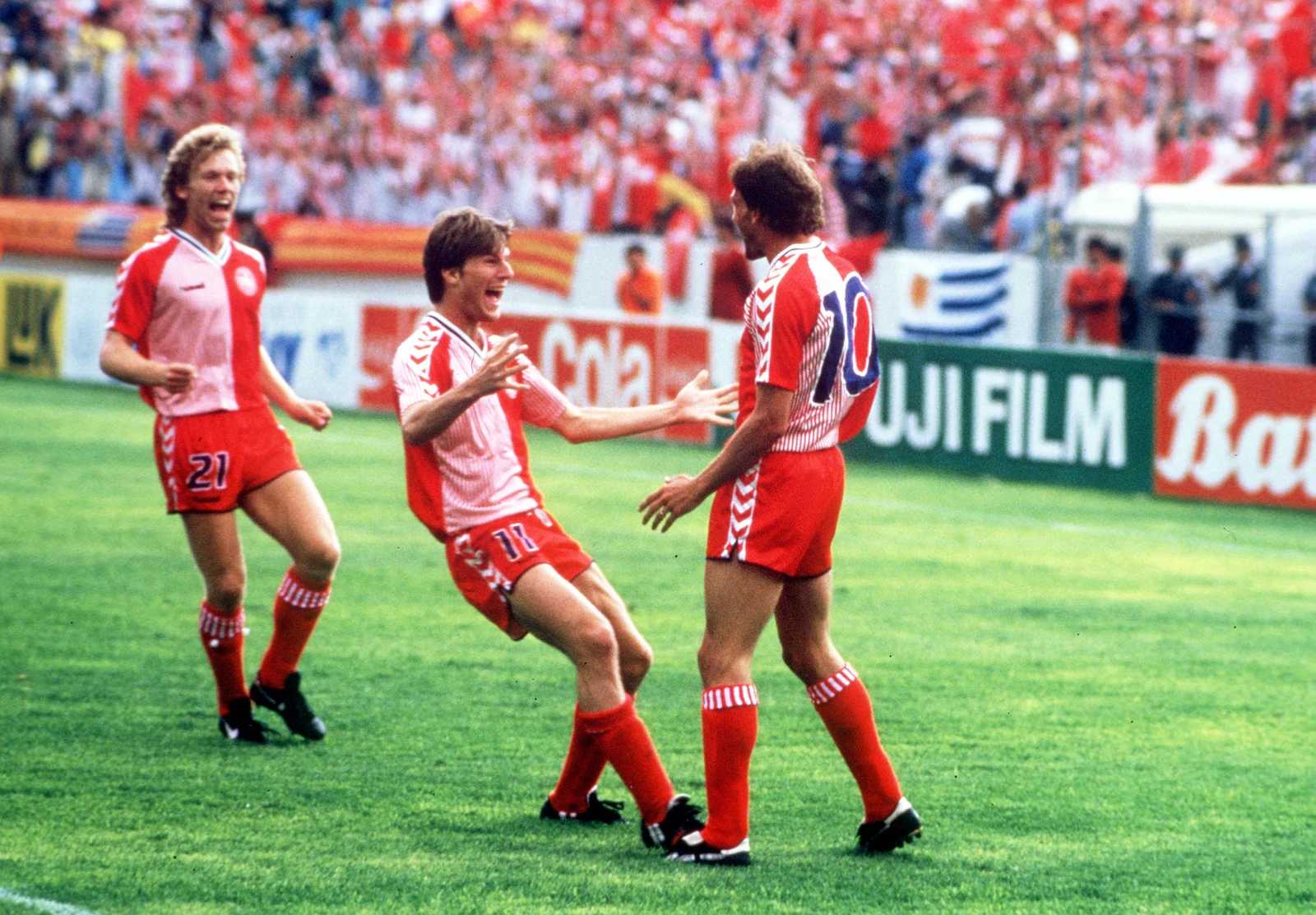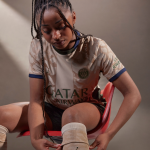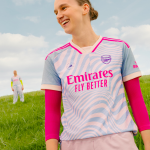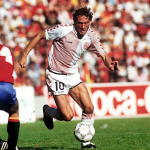
Template History - Hummel Denmark 1986
How the Danish national team kit ushered in the golden decade of football shirts
November 22nd, 2022
The World Cup is not only the quadrennial appointment for footballers, fans and national teams waiting to play for immortal glory in a few decisive matches. It is also an irresistible showcase for technical sponsors who can launch a world premiere, literally, of new designs and templates that will go on to define the brand aesthetic in the following seasons. Every World Cup has had its template, its sportswear brand with which to associate the sweetest or harshest memories. When Hummel presented the jerseys for the Denmark national team in 1986, the disruptive effect of the chosen design created a wave that changed the aesthetics of football jerseys in the following decade. The jersey worn by Netherlands in the 1988 European Championship, won by the oranges thanks to the prowess of Marco Van Basten and Ruud Gullit, and signed by adidas, is often used as the kit from which all the other crazy templates from the early 1990s descended, but it was Hummel's imagination that set the new tone.
With its bold design divided vertically into two parts mirroring each other, one half with thin red and white stripes, the other with darker red stripes, following a colour-blocking pattern that was taking off at that time, it was strikingly different from all those seen before. On the sleeves and shorts the pattern matched the main one, with a thin blue seam line used to enhance the colour combination, while the jersey, designed to be comfortable even in the scorching heat of the Mexican World Cup, was made from an extremely lightweight and aerodynamic fabric. Surprisingly, it was approved by FIFA, who only demanded to change the game shorts, which initially featured the same design, to all-white or all-red, depending on the kit used. But it was not the technical features that made Hummel's kit unique.
When it was presented to general amazement it was immediately dubbed 'The Carnival Suit', suggesting how such an unusual design for a football shirt could be received at the time. Even the Danish footballers, who wore the first non-monochrome jersey in the history of the national team at the European Championships with contrasting white sleeves and the famous zigzag chevron along the shoulders, were initially taken aback by Hummel's futuristic design. There were those who saw it as a breath of fresh air in at the time highly standardised market, and those who saw it as a simple publicity stunt by a brand that needed to make room for itself among many competitors.
Luckily for Hummel, Denmark at that time had a team capable of making the shirt they wore special. Before that time, the Danish national team had never qualified for a World Cup, and until the 1970s the entire football movement was limited to amateurism to the extent that players had to apply to the federation for permission to be registered with professional teams abroad. Everything changed with the arrival of the German coach Sepp Piontek, who through a militaristic regime managed to transform a very talented group into a real team with revolutionary playing principles. What went down in history as Danish Dynamite was led on the pitch by Michael Laudrup, then with Juventus, and Preben Elkjaer, hero of Bagnoli's Verona Scudetto. A crazy and beautiful team, able to overcome the group with full points with West Germany, Scotland and Uruguay and then go out losing 5:1 to Spain in the round of 16, when they had become the revelation of the tournament.
Despite an inglorious end, the Danish national team indelibly marked that World Cup and the template designed by Hummel also became widely used for club teams, in England with Southampton, Aston Villa and Coventry City, but also in Italy with Pisa and Verona. This new model set a benchmark for all other brands, which from that point onwards began to break the mould previously used in football shirt design, giving life to that crazy and vital decade. All thanks to the Danish national team and its sponsor Hummel, a historic partnership that is still going strong today for the World Cup in Qatar.













